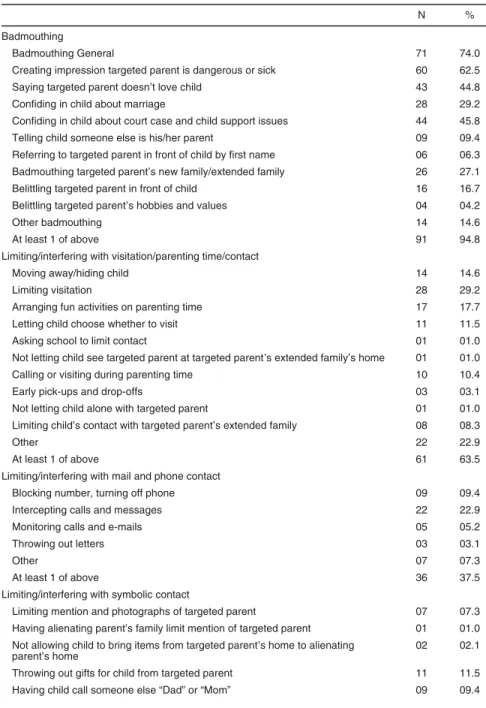Behaviors and Strategies Employed in Parental Alienation: A Survey of Parental Experiences
Texto
Imagem



Documentos relacionados
Com sinceridade diz ainda “Sou, mas nem sempre quero, nem sempre posso”, e que já é um grande passo na dura via cristã saber que não somos aqueles que gostaríamos de ser e
Our analysis of the frequencies of parental care strategies (longitudinal or transverse) indicated that Total Care, i.e., adult protection of offspring both longitudinally
Comparativamente com as normais climatológicas (Figura 3.2) e as respetivas rosa-dos-ventos (Figura 3.6) constata-se que tanto os resultados do WRF como os do ERAInterim
Estudos posteriores permitiram chegar uma versão reduzida deste instrumento, constituída por 32 itens que, da mesma forma que a versão original, avalia os três estilos parentais:
The objective was to identify scientific research on aspects related to family context and sleep patterns of children and adolescents. The results highlight that the parents'
77 Figura 25: Extremidade distal do membro posterior esquerdo - projeção D45°L-PlMO na imagem à esquerda e projeção D45°M-PlLO na imagem à direita (Imagens gentilmente cedida
Medição do óxido nítrico no ar exalado: Utilização na avaliação de crianças com história de sibilância The clinical use of exhaled nitric oxide in wheezing children..
Estes valores apontam um uso mais frequente das estratégias de controlo (muitas vezes) seguido de evitamento (algumas vezes) e, por fim, a gestão de sintomas (poucas vezes). Quanto